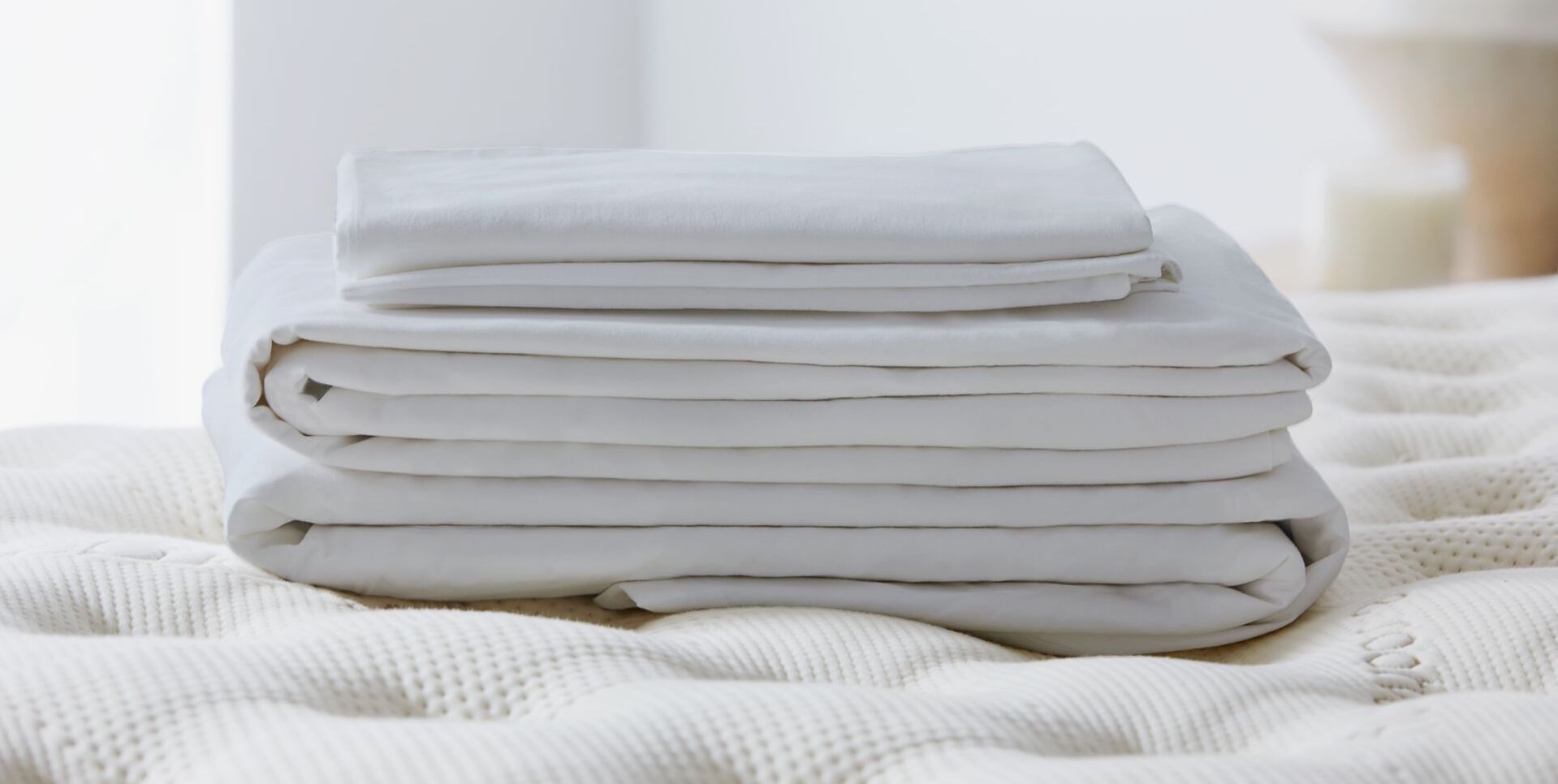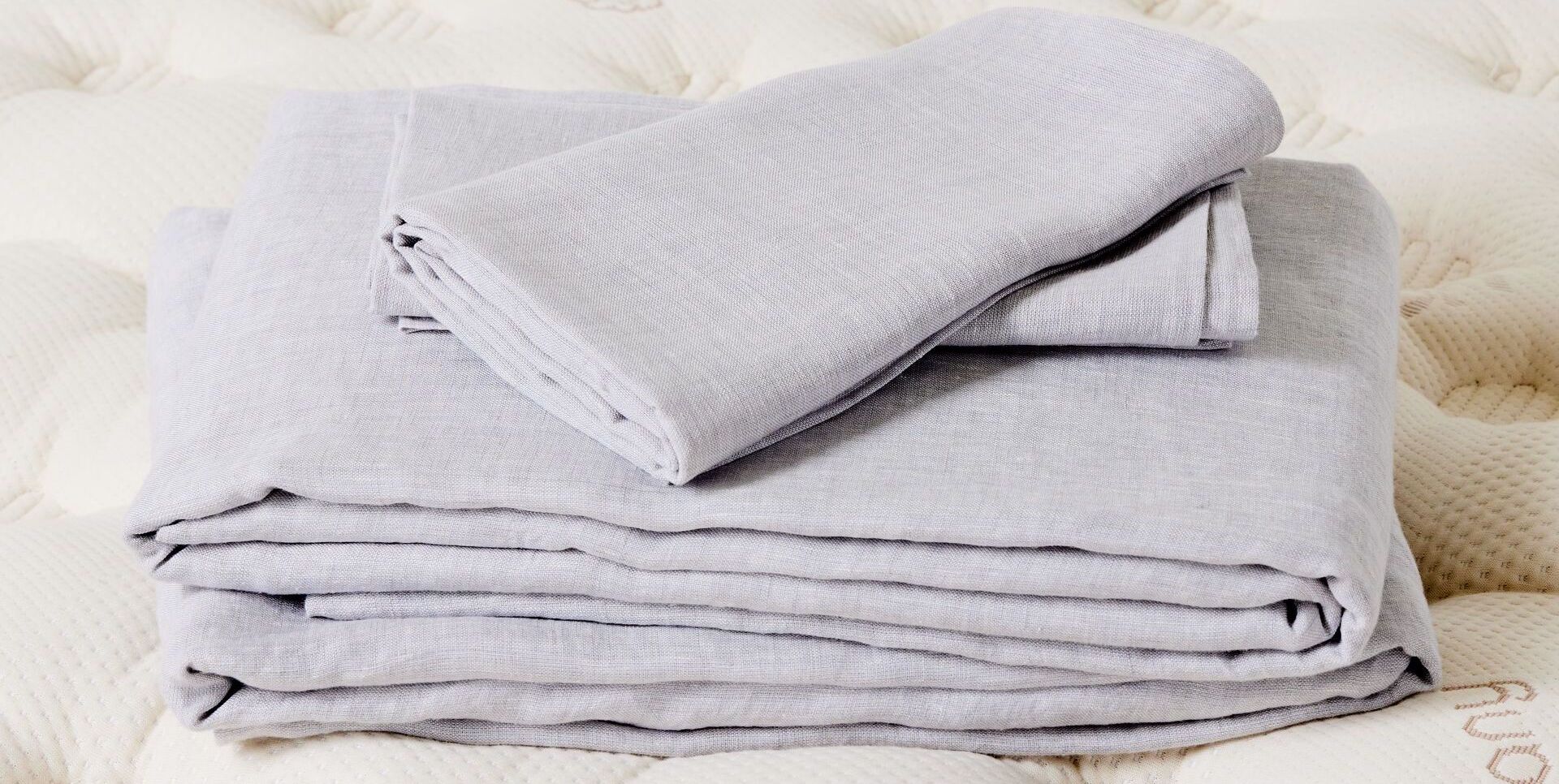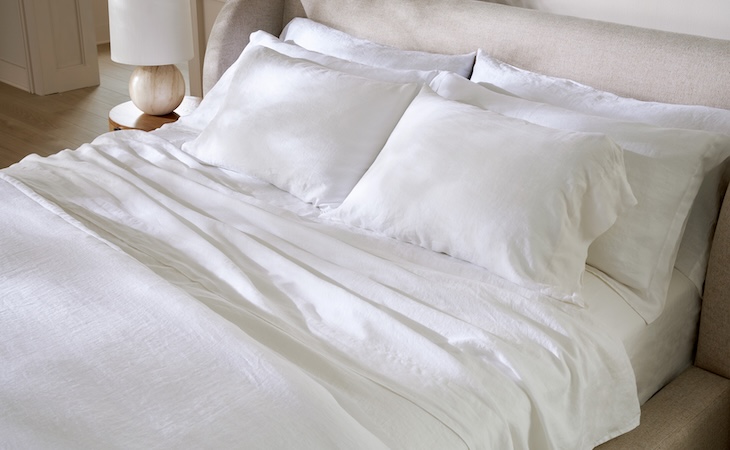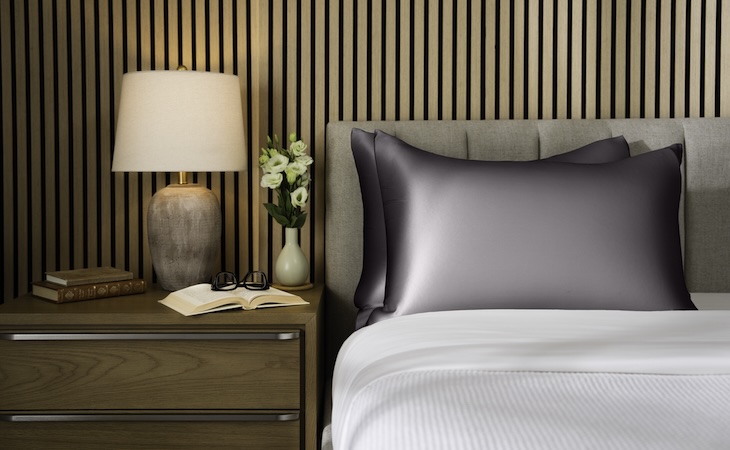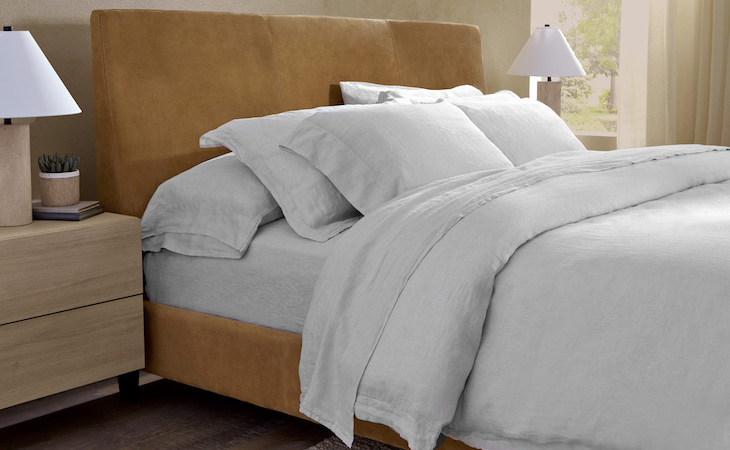Your body temperature naturally decreases at night, a process that helps you to become drowsy and fall asleep.
Research also shows that people sleep better in a cooler environment; the ideal room temperature for sleep is somewhere between 60 and 67 degrees Fahrenheit. It makes sense, then, that anything that causes you to be too hot can disrupt your sleep.
Beyond setting your thermostat to the right temp, though, it’s a good idea to consider the role of your bedding, since some materials sleep hotter than others.
When it comes to sheets, in particular, there are a few things to look for to ensure you’ll be able to enjoy a cool, comfortable night’s sleep.
How to choose cooling sheets
Some sheets are simply cooler than others (pun intended), due to several factors such as the material they’re made from, the type of weave, and even their color.
Material
Natural materials offer the best breathability and airflow. Cotton, linen, bamboo, and eucalyptus are the best materials for cooler sleep.
- Cotton, the most popular sheet fabric today, offers great airflow and moisture-wicking properties. Opt for long-staple cotton, which is softer, stronger, and more durable than short-staple varieties. (Learn more about organic cotton here.)
- Linen is another great sheet material to choose for a cool night’s sleep. The highest quality linen is made from European flax, which grows taller than flax grown in other places. The taller the flax plant, the longer the fibers taken from these plants to produce yarn. Longer fibers mean better breathability and moisture-wicking properties. Linen can absorb up to 20% of its weight in moisture before feeling wet, meaning it will keep you dry and comfortable throughout the night. (Learn about the effect of dehydration on sleep.)
- Bamboo, a natural fabric made from the pulp of bamboo grass, is popular not only for its soft feel but also because it’s hypoallergenic and highly breathable. Bamboo can take in three times more water than its weight, which means that it’s extremely effective at wicking moisture away from your body.
- Lyocell (most commonly known by its brand name Tencel) is a fabric derived from the pulp of eucalyptus trees. Tencel is composed of lots of tiny hydrophilic (i.e. water-loving) fibers, meaning that it naturally absorbs moisture from your skin as you sleep.
Materials to avoid: Stay away from microfiber or polyester sheets, which tend to trap heat rather than wick it away from your body.
Weave
The type of weave is another factor to consider when looking for the best sheets to keep you cool. The two most common types of sheet weaves are sateen and percale. Of these two, percale is the more breathable option.
Here’s the technical reason why: Percale finish uses a one-yarn-over, one-yarn-under pattern. It produces a fabric with a matte finish that allows excellent airflow between the threads.
Sateen, on the other hand, is a one-yarn-over, three-yarn-under weave. It exposes more thread surface, producing a sheet with a shiny and silky feel. But it’s also a tighter weave than percale, meaning that it’s less breathable.
Related: The best bedding for sensitive skin
Thread count
Thread count refers to how many horizontal and vertical threads a sheet has per square inch. But a higher thread count doesn’t necessarily equal more breathable sheets.
In fact, the National Sleep Foundation recommends choosing sheets with a thread count between 200 and 400 for optimal coolness.
When the thread count of your sheets is too high, the fabric won’t breathe well, trapping body heat and making for a hotter, more uncomfortable night’s sleep.
Ply
This is a reference to the number of yarns that are twisted together to make one thread. Sheets made from single-ply threads are more breathable than sheets made from multi-ply threads.
Why? Single-ply threads, which are longer and stronger than multi-ply ones, result in lightweight, soft sheets.
Multi-ply threads are typically made from shorter, weaker fabrics and produce a coarser, heavier yarn that won’t keep you quite as cool.
Related: What you need to know before buying new sheets
Color
One last thing to consider is color. Light-colored sheets are a better option than dark-colored ones when it comes to keeping cool.
That’s because light-colored sheets reflect rather than absorb the light that shines into your bedroom during the day, and so they tend to get less hot. Plus, light, neutral sheets are often made without irritating dyes.
FAQs
What is the best material for sheets for cooling?
There are many good materials you can look for if you’re in the market for cooling sheets. Cotton, linen, bamboo, and eucalyptus are all great materials that can help keep you cool. These materials tend to be breathable and moisture-wicking. (Here are the best products to keep you cool while sleeping.)
Do cooling sheets actually work?
Sheets made out of a breathable material like cotton or linen can help keep you cool at night. Using cooling sheets can be especially beneficial if you’re a hot sleeper or live in a hot climate.
How often should I change my sheets?
You should aim to change your sheets every one to two weeks. That’s because bacteria can build up in your sheets over time. If you tend to sweat overnight, consider changing your sheets more frequently since bacteria thrive on moisture.
How long do sheets last?
It’s a good idea to replace your sheets every two to three years. If you noticed your sheets are yellowed or discolored, the fabric is starting to thin, or the edges are fraying, then it could be time to buy a new set. (Here’s how to reuse old sheets instead of throwing them away.)
What are some other ways to keep cool at night?
There are a lot of other ways you can stay cool at night besides swapping your sheets. Consider getting a cooling mattress, installing a ceiling fan, or bringing an ice pack to bed with you. You can even sleep nude to ensure cooler sleep!
Check out Saatva’s selection of cooling sheets
The right sheets can go a long way toward improving your sleep. If you’re looking for cooling sheets, check out Saatva’s selection of soft, breathable sheets. All of our bedding is made from high-quality materials to help you experience your best sleep yet.



